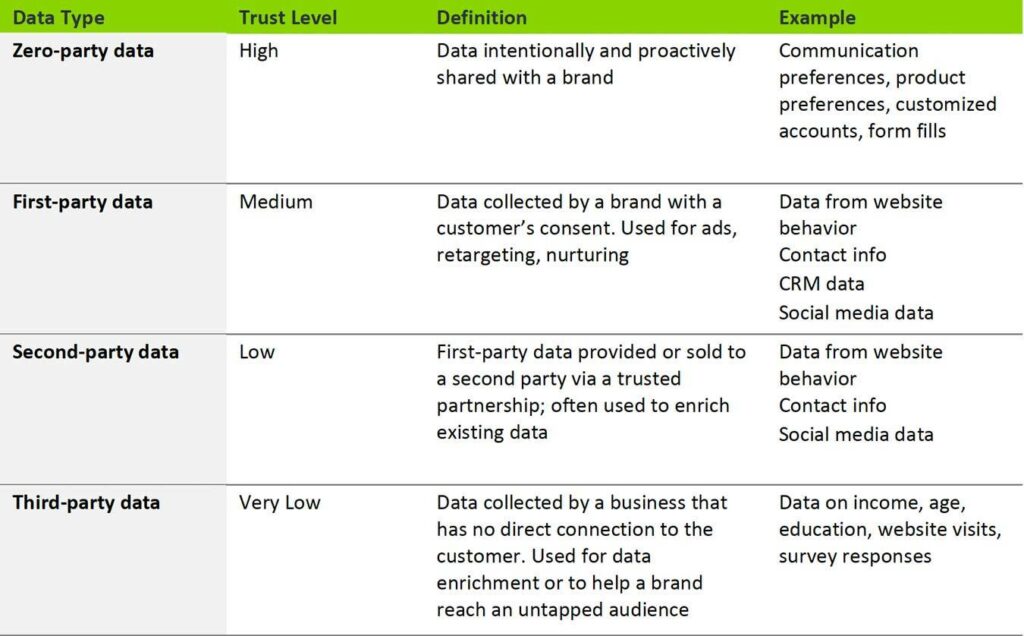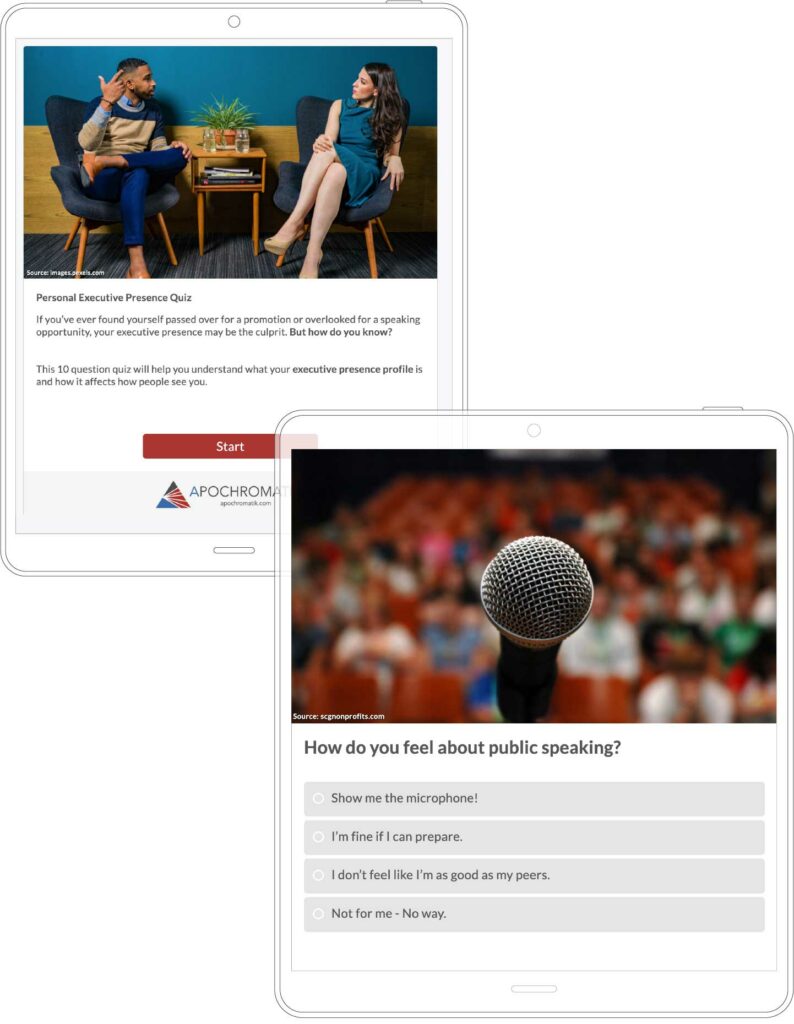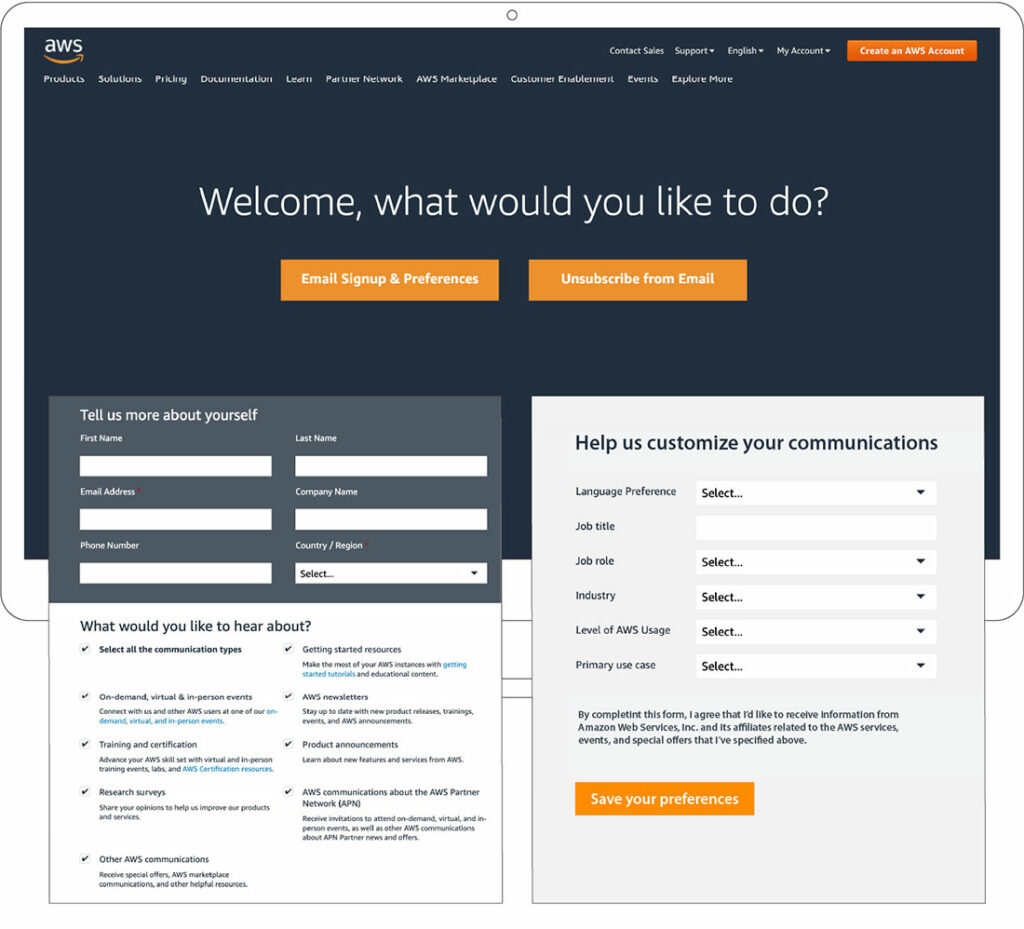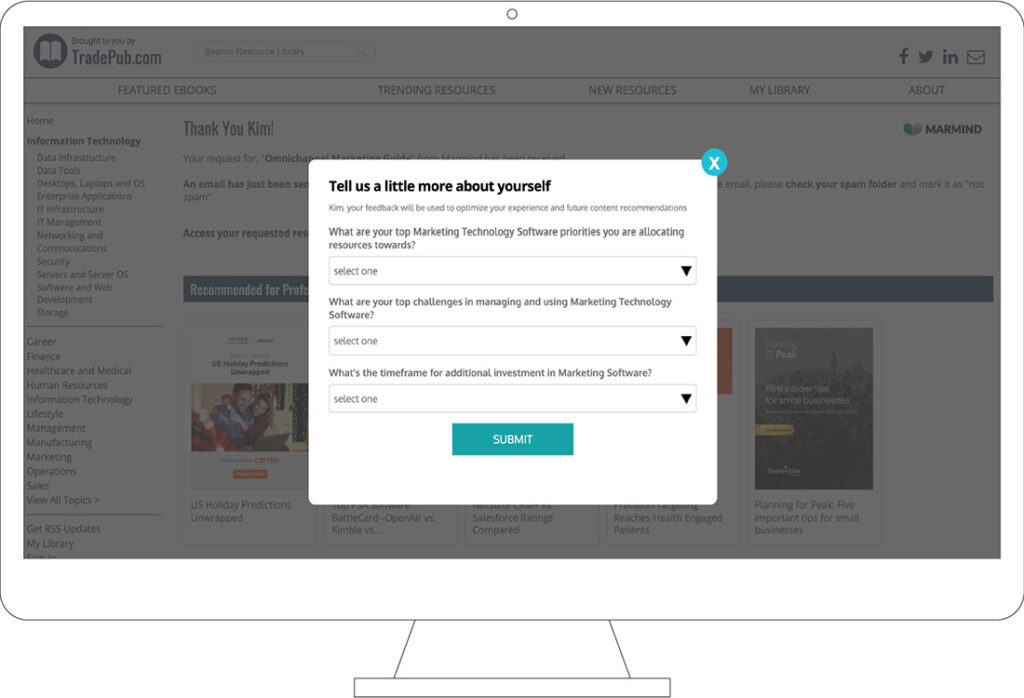State and federal data privacy regulations, Big Tech third-party cookie deprecation, and cookie blocking apps will dramatically limit the types of data you relied on to reach and engage with your audiences on digital channels. In my previous post, I explained how to succeed in a privacy-first world by embracing zero-party and first-party data, in order to provide relevant and personalized content that your audiences value.
Now it’s time to dig a little deeper into the data angle and what content marketers need to know. In this blog post we will:
- Answer the question: what is zero-party data?
- Explain the differences between zero-party data, first-party data, and other types of data.
- Show examples of how B2B marketers are collecting zero-party data today.
- Provide a quick-start guide for collecting zero-party data.
What Is Zero-Party Data?
Zero-party data is information that individuals willingly share with a brand.
Forrester defines it as “data that a customer intentionally and proactively shares with a brand, which can include preference center data, purchase intentions, personal context, and how the individual wants the brand to recognize her.” Although Forrester originally defined zero-party data for consumer brands, we feel it is equally important for B2B brands.
This is not a new concept. After GDPR launched in 2018, many B2B brands began providing their customers with an easy way to opt in to specific communications via communication preference centers. But B2B marketers have also leaned heavily on other types of data to reach their target audiences.
What Is the Difference Between Zero-Party Data and First-Party Data?
You’re probably more familiar with first-party data because this is the data you collect from your customers with their consent. For example, when a visitor lands on your website, they are likely greeted with a cookie consent pop-up that provides them with the ability to accept your use of cookies, which then allows you to retarget them and display your ads after they leave your website.
Zero-party data, on the other hand, is willingly shared with a brand. Examples include communication preferences, product preferences and customized profiles or accounts. Zero-party data is the ultimate sign of trust, since the customer is sharing this data—unsolicited—in return for something they value.
But wait, there’s more: second-party data and third-party data. Both data types may be collected and used without the customer’s direct consent. Second- and third-party data are the problem-children of the data family. While businesses can still use this data, it is risky if the data gets into the wrong hands. This can happen when data changes hands (data breach, anyone?), and when it happens, you can lose your customer’s trust forever.
Types of Data and Where They Come From

Examples of How B2B Brands Collect Zero-Party Data
B2B marketers are collecting zero-party data today, and we anticipate that their approaches will become more creative and sophisticated in the upcoming months.
Apochromatik
Apochromatik uses a short quiz to gain valuable customer insights.

Amazon
Amazon makes it easy for users to set their email preferences and provide zero-party data along the way.

Netline
Netline provides an option to include custom questions in their content download form.

Your Quick-Start Guide for Gathering Customer Data
Increasing privacy laws and browser cookie deprecation are inevitable. But as the saying goes, when one door closes, another opens. Zero-party data will provide ample opportunities to gather quality data and build trust with your customers. Here are a few steps you can take to get started today:
- Audit your data-collection practices. Ask your marketing ops and email marketing teams what types of customer data are they currently collecting. What privacy best practices do they follow? How can you work with them to access zero- and first-party data?
- Identify “low-hanging fruit” opportunities for collecting zero-party data. If you are gating content behind a form, work with your email marketer to add one or two additional open-ended questions to gather insights about how your customer wants to engage with you. Running email nurture programs? Add a poll or survey to one of the emails to collect data that will provide valuable insights for your content marketing strategy.
- Develop a data-sharing process to inform your content marketing plan. Schedule regular meetings with your digital marketing team to review zero- and first-party data and determine how it can be used to create personalized content for your target personas. Brainstorm new ways to entice your customers to provide information on their wants and needs.
Need more guidance on how to use zero-party data in your content marketing? Contact a Tendo expert.










